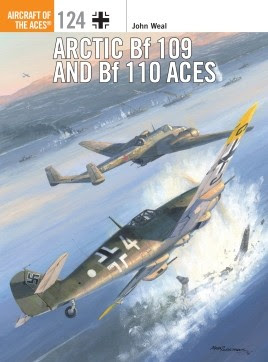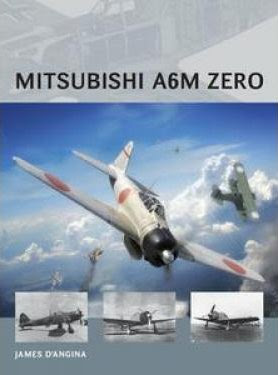December 2016, New Releases from Osprey Publishing Ltd
Instrument of War
Drawing on more than a half-century of research and teaching, Dennis Showalter presents a fresh perspective on the German Army during World War I. Showalter surveys an army at the heart of a national identity, driven by - yet also defeated by - warfare in the modern age, which struggled to capitalize on its victories and ultimately forgot the lessons of its defeat.
Exploring the internal dynamics of the German Army and detailing how the soldiers coped with the many new forms of warfare, Showalter shows how the army's institutions responded to and how Germany itself was changed by war. Detailing the major campaigns on the Western and Eastern fronts and the forgotten war fought in the Middle East and Africa, this comprehensive new volume reveals operational strategy, the complexities of campaigns of movement versus static trench warfare, and the changes in warfare.
No Victory in Valhalla
The final volume of Gardner's critically acclaimed biography of the Third Battalion 506 Parachute Infantry Regiment - the sister company to the famed Band of Brothers - this book traces the battalion's actions in the frantic final days of the war in Europe. Exhausted and battered following the disastrous Market-Garden campaign, the 506th were due three months of R&R, but were rushed back in to halt the desperate German attack during the Battle of the Bulge.
When the offensive was finally halted after months of fighting the 506th pushed on into Germany where Ed Shames was the first Allied soldier to enter Dachau before the unit were sent to occupy Hitler's mountain retreat at Berchtesgaden. Based on extensive interviews and first-hand accounts, this volume relives the struggles of the paratroopers of the renowned 'Screaming Eagles' in some of the toughest fighting of World War II, bringing the story of their defiant unit to its conclusion.
Arctic Bf 109 and Bf 110 Aces
Once Nazi Germany had conquered Norway in 1940, just a handful of Gruppen flying the Bf 109 and Bf 110 fighters were able to shatter all opposition and dominate the air in the Arctic Circle. Yet as the dual threats of the RAF and the Red Air Force grew, the Luftwaffe was forced to increase its fighter presence to full Geschwader strength with the formation of JG 5 Eismeer (Ice-sea) in early 1942.
The struggle for the frozen skies of the arctic raged on until the end of the war as the embattled JG 5 produced some of the Eastern Front's leading aces, pilots of the calibre of Theodor Weissenberger, Heinrich Ehrler, Walter Schuck, Franz Dörr and Jakob Norz all achieving over 100 kills. Featuring first-hand accounts from the pilots, extensive research from a leading authority on the Luftwaffe, and illustrations of the aircraft in unique winter camouflage, this book is a comprehensive guide to the Arctic Experten and the planes they flew.
MiG-17/19 Aces of the Vietnam War
At the beginning of the Vietnam War, the Vietnam People's Air Force (VPAF) were equipped with slow, old Korean War generation fighters - a combination of MiG-17s and MiG-19s - types that should have offered little opposition to the cutting-edge fighter-bombers such as the F-4 Phantom II, F-105 Thunderchief and the F-8 Crusader. Yet when the USAF and US Navy unleashed their aircraft on North Vietnam in 1965 the inexperienced pilots of the VPAF were able to shatter the illusion of US air superiority.
Taking advantage of their jet's unequalled low-speed maneuverability, small size and powerful cannon armament they were able to take the fight to their missile-guided opponents, with a number of Vietnamese pilots racking up ace scores. Packed with information previously unavailable in the west and only recently released from archives in Vietnam, this is the first major analysis of the exploits of Vietnamese pilots in the David and Goliath contest with the US over the skies of Vietnam.
Mitsubishi A6M Zero
Unquestionably the most iconic Japanese fighter of World War II, the Mitsubishi A6M Rei-Sen, Type Zero fighter was used from the initial raid on Pearl Harbor up to the Kamikaze attacks at the end of the war. Facing off against the likes of the Wildcat, Corsair and even the Spitfire, the Zero gained a legendary reputation amongst Allied pilots due to its incredible manoeuvrability. Detailed analysis of its technical qualities show why the Zero was so feared, but also pinpoints the weaknesses that would eventually be its downfall as Allied pilots learned how to combat it.
A selection of historical photographs and unique artwork accompany the analysis as James D'Angina delves into the history of the premier Axis fighter of the Pacific Theatre, exploring the design and combat effectiveness of the Zero as well as the tactics developed by Allied pilots to counter it.
Chosen Men
Chosen Men is a set of fast-action skirmish rules detailing the bloody skirmishes between light troops in the Napoleonic Wars. The primary focus of the game is on soldiers and NCOs in light 'flank' companies, as they scout ahead of larger forces and take part in man-to-man actions against enemy skirmishers.
Although the game allows for the formation of accurately sized companies of light infantry and cavalry if you wish, these formations are broken down into small groups of up to a dozen men. For the most part, officers are not swashbuckling super-heroes, but staunch commanders who rally and direct their men to achieve the battlefield objectives. Although the game uses an alternating action turn sequence, officers can use their influence on multiple units at the same time in an effort to steal the initiative. With all rolls resolved using standard 6-sided dice, this game combines a classic wargaming feel with modern wargame mechanics.
Rogue Stars
Rogue Stars is a character-based science fiction skirmish wargame, where players command crews of bounty hunters, space pirates, merchants, prospectors, smugglers, mercenary outfits, planetary police and other such shady factions from the fringes of galactic civilisation. Crews can vary in size, typically from four to six, and the character and crew creation systems allow for practically any concept to be built. Detailed environmental rules that include options for flora, fauna, gravity, dangerous terrain and atmosphere, and scenario design rules that ensure that missions are varied and demand adaptation and cunning on the parts of the combatants, make practically any encounter possible. Run contraband tech to rebel fighters on an ocean world while hunted by an alien kill-team or hunt down a research vessel and fight zero-gravity boarding actions in the cold depths of space - whatever you can imagine, you can do.
Osprey Publishing Ltd
MiG-17/19 Aces of the Vietnam War
At the beginning of the Vietnam War, the Vietnam People's Air Force (VPAF) were equipped with slow, old Korean War generation fighters - a combination of MiG-17s and MiG-19s - types that should have offered little opposition to the cutting-edge fighter-bombers such as the F-4 Phantom II, F-105 Thunderchief and the F-8 Crusader. Yet when the USAF and US Navy unleashed their aircraft on North Vietnam in 1965 the inexperienced pilots of the VPAF were able to shatter the illusion of US air superiority.
Taking advantage of their jet's unequalled low-speed maneuverability, small size and powerful cannon armament they were able to take the fight to their missile-guided opponents, with a number of Vietnamese pilots racking up ace scores. Packed with information previously unavailable in the west and only recently released from archives in Vietnam, this is the first major analysis of the exploits of Vietnamese pilots in the David and Goliath contest with the US over the skies of Vietnam.
Mitsubishi A6M Zero
Unquestionably the most iconic Japanese fighter of World War II, the Mitsubishi A6M Rei-Sen, Type Zero fighter was used from the initial raid on Pearl Harbor up to the Kamikaze attacks at the end of the war. Facing off against the likes of the Wildcat, Corsair and even the Spitfire, the Zero gained a legendary reputation amongst Allied pilots due to its incredible manoeuvrability. Detailed analysis of its technical qualities show why the Zero was so feared, but also pinpoints the weaknesses that would eventually be its downfall as Allied pilots learned how to combat it.
A selection of historical photographs and unique artwork accompany the analysis as James D'Angina delves into the history of the premier Axis fighter of the Pacific Theatre, exploring the design and combat effectiveness of the Zero as well as the tactics developed by Allied pilots to counter it.
Chosen Men
Chosen Men is a set of fast-action skirmish rules detailing the bloody skirmishes between light troops in the Napoleonic Wars. The primary focus of the game is on soldiers and NCOs in light 'flank' companies, as they scout ahead of larger forces and take part in man-to-man actions against enemy skirmishers.
Although the game allows for the formation of accurately sized companies of light infantry and cavalry if you wish, these formations are broken down into small groups of up to a dozen men. For the most part, officers are not swashbuckling super-heroes, but staunch commanders who rally and direct their men to achieve the battlefield objectives. Although the game uses an alternating action turn sequence, officers can use their influence on multiple units at the same time in an effort to steal the initiative. With all rolls resolved using standard 6-sided dice, this game combines a classic wargaming feel with modern wargame mechanics.
Rogue Stars
Rogue Stars is a character-based science fiction skirmish wargame, where players command crews of bounty hunters, space pirates, merchants, prospectors, smugglers, mercenary outfits, planetary police and other such shady factions from the fringes of galactic civilisation. Crews can vary in size, typically from four to six, and the character and crew creation systems allow for practically any concept to be built. Detailed environmental rules that include options for flora, fauna, gravity, dangerous terrain and atmosphere, and scenario design rules that ensure that missions are varied and demand adaptation and cunning on the parts of the combatants, make practically any encounter possible. Run contraband tech to rebel fighters on an ocean world while hunted by an alien kill-team or hunt down a research vessel and fight zero-gravity boarding actions in the cold depths of space - whatever you can imagine, you can do.
Osprey Publishing Ltd







No comments:
Post a Comment